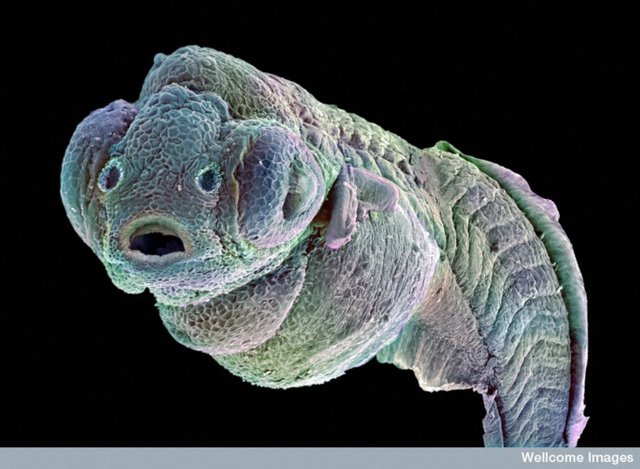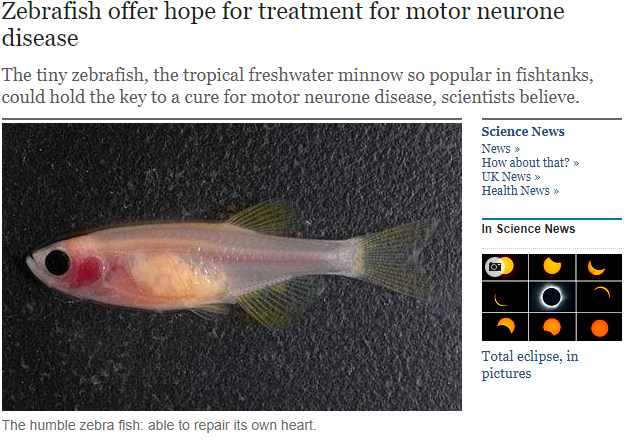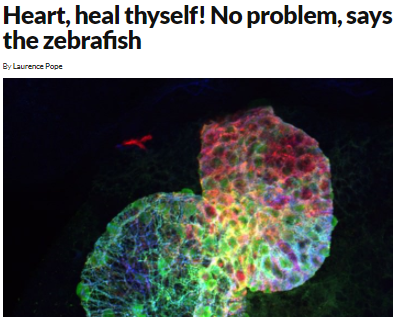The Fabulous Zebrafish
Most people know that 'model organisms' are commonly used in scientific research. The most famous model organisms amongst the layman are NHPs ("Non-Human Primates"), and they are also the most controversial.
Their close relationship with human beings makes them most useful but also means that they are very rarely used, as the ethical issues which are a constant consideration in all animal testing are understandably intense. The use of NHPs as model organisms makes up only 0.28% of the animals used in laboratory research in the USA. About 90% of the animals used in laboratories are rodents, while even more distant species like the fruit fly and yeast strains are also regularly used.
A newer, and fascinating, model organism is the Zebrafish. A small - about 4cm - fish native to East India and Burma/Myanmar, the zebrafish was first used in research by Soviet scientists and even found itself launched into orbit during the Space Race. However it wasn't until the 1980s that it's use in scientific research picked up - and it was first cloned in this decade - before appreciation of it's unique attributes began to be realised in the 90s as genetic analysis became more accessible with the exponential increases in computing power.
Now, the Zebrafish is one of the few vertebrate species to have had it's genome fully sequenced (in 2013) which showed that about 70% of it's genes are orthologous (related) to human genes while up to 84% of human genes involved in disease have counterparts in the Zebrafish.
This means that the tiny Zebrafish can be used to study and attempt to create treatments for human diseases ranging from cancer to Alzheimer's disease.
Almost as important are the Zebrafish attributes which make it a cheap and incredibly flexible organism:
- It grows incredibly quickly - in a single day a zebrafish embryo will mature as much as a human embryo would in a month
- The embryos are transparent, which allows the developing inner organs to be studied
- Zebrafish can repair heart muscle
It's the final point which is most fascinating. In humans (and mammals generally) the ability to repair damaged heart tissue is not something they possess - although some species can repair tissue when newborn - but the Zebrafish can have up to 20% of it's heart tissue cut out and regenerate it within a couple of months.
Unsurprisingly, this ability has led to a lot of excitement amongst those hoping to improve treatment for cardiovascular diseases in humans with potential 'cure' for heart disease seen as a prospect.
Further Reading
- Fish’s re-grown heart gives hope for humans
- Getting to the Heart of Regeneration in Zebrafish
- Zebrafish genome yields significant similarity to human genome
- Of Fish and Men: Using Zebrafish to Fight Human Disease
- Zebrafish provide new insight into human back pain & cancer
- Zebrafish offer hope for treatment for Motor-Neurone disease


